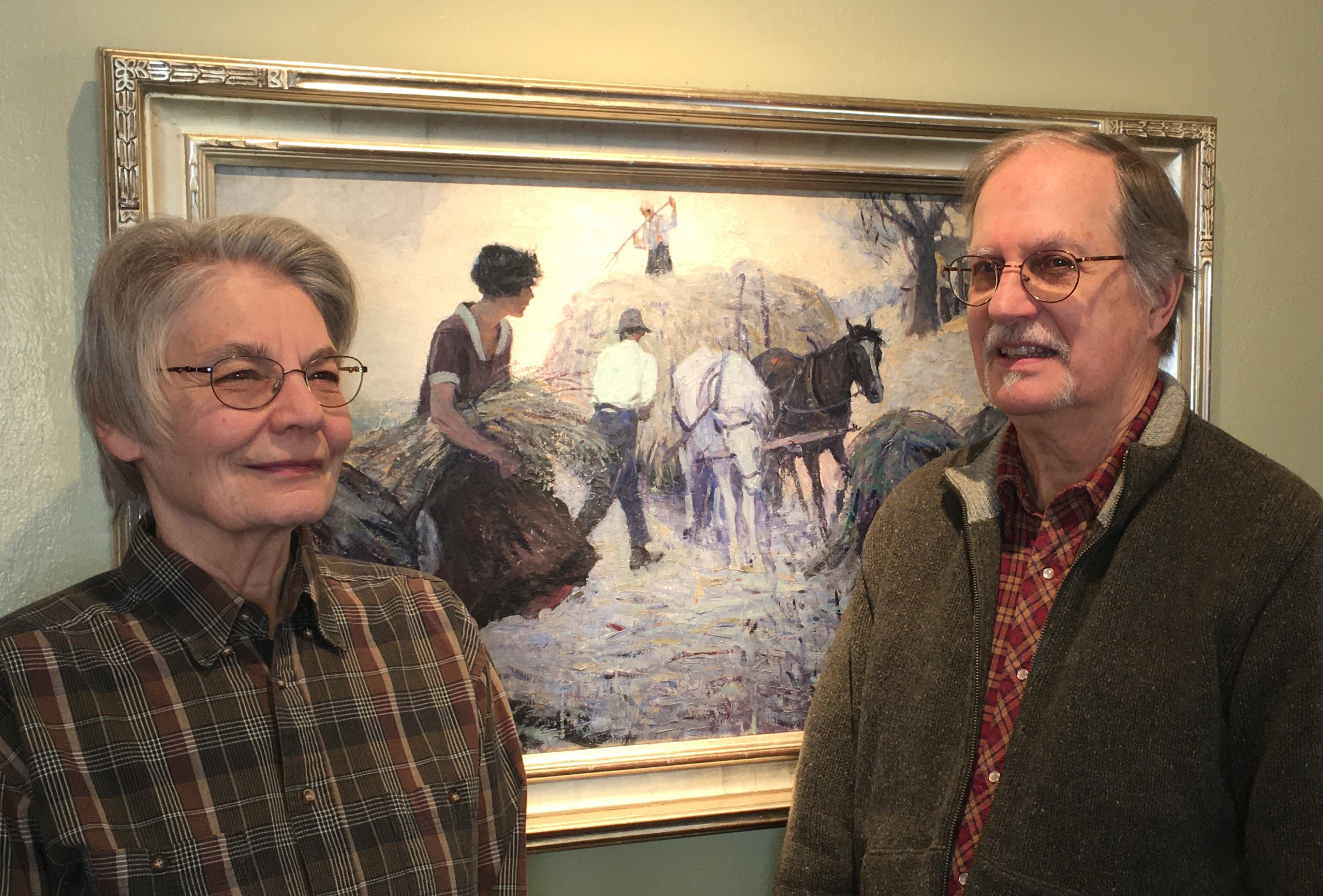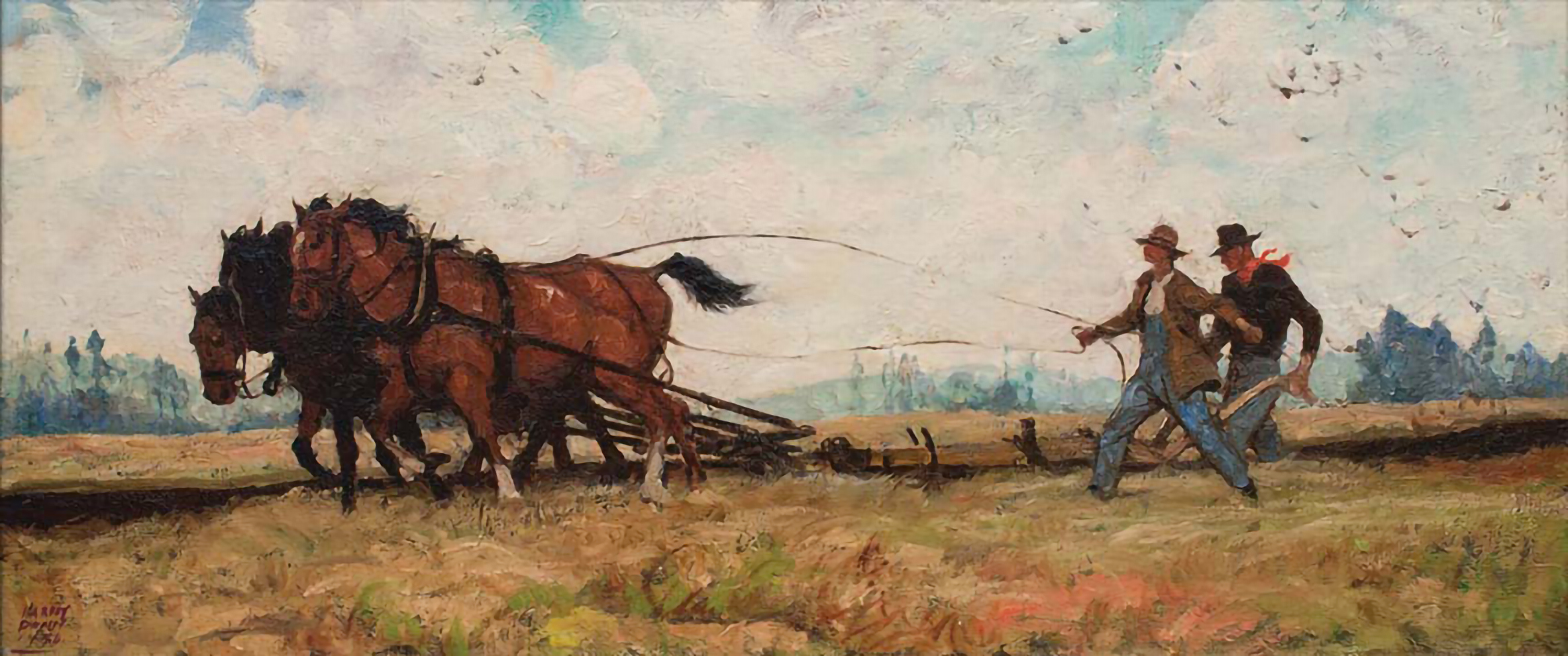
Nebraskans Mark and Carol Moseman have collected more than 200 works of art representing an eclectic array of styles and renowned artists from America and Europe, with one thread that weaves them together: humankind’s relationship to the land.
Now considered a collection of significant artistic and historic value, the works fall under the genre of agrarian art. The term was coined by Mark Moseman, a well-respected agrarian artist himself, and is now recognized by the Smithsonian Institution.
Over the years, the Mosemans donated art from their collection to various museums and are now giving the remainder to the Great Plains Art Museum, housed in the University of Nebraska–Lincoln’s Center for Great Plains Studies.
“Agrarian Spirit in the Homestead Area: Artwork from the Moseman Collection of Agrarian Art” will be exhibited at the museum from July 2 to Oct. 23, with an opening reception from 5 to 7 p.m. July 2. The reception is free and open to the public.
“We are incredibly grateful for the Mosemans’ continued support and generosity, and we are honored they have entrusted this collection to the museum and University of Nebraska,” said Ashley Wilkinson, museum director and curator. “These artworks enable us to provide a new level of education and experiences for visitors, students and researchers, one that fosters important conversations surrounding the diverse and complicated history of land use on the Great Plains. We look forward to sharing this collection with the public for years to come.”
Mark Moseman curated the exhibition of 61 works. It includes paintings, sculptures and prints revealing a dramatic change in culture in the Great Plains, from European American settlement and homesteading in the 1860s to an exodus from the land beginning in the 1930s.
The exhibition features works by artists such as Jean-François Millet, Eastman Johnson, Winslow Homer, Georges Laugée, Thérèse-Marthe-Françoise Dupré, John Gutzon Borglum, Harvey Dunn, Diego Rivera and Robert Gwathmey. Artwork by John Steuart Curry and Georges Schreiber show uncertainty near the end of the Homestead era and the twilight of this brief but transformative time in American history.
“The Moseman Collection and the financial support the Mosemans have committed is an invaluable contribution to our mission to foster the study of and appreciation for the people, cultures and natural environment of the Great Plains,” said Margaret Jacobs, director of the Center for Great Plains Studies. “Their donation also elevates the overall stature and excellence of the university. We are so grateful for their generosity.”

About donating their art, Carol Moseman said: “It feels good because it will have a home. People will be able to see it long after we’re gone. People will be able to see the stories in the paintings.”
The Mosemans have also established a fund through the University of Nebraska Foundation for the Great Plains Art Museum. The endowment will ensure their collection is preserved and help make it accessible to the public.
The Mosemans grew up in small-town Nebraska — Mark outside Oakland and Carol in Brainard — and are descendants of immigrant homesteaders and settlers who came to Nebraska in the 1800s. Mark Moseman said his earliest memory of farm life was putting up hay with his father and grandfather. He recalls a vibrant family and social life on the farm and in the surrounding community — the farms were small, and the families helped each other.
Mark and Carol Moseman, both Husker alumni, said as they became older, they saw the centuries-old farm life begin to change. Hands-on labor transitioned to mechanized farming, which needed fewer people. As technology advanced, farms got bigger, and the small towns that depended on their business emptied out.
“It was a gradual, slow death,” Mark Moseman said of the exodus from family farming. “The loss of those people and culture is something that should be noted. It shouldn’t just be something that dies on the vine.”
The Mosemans decided to do their part to document that story through the art they collected — not just the exodus from the farm, but the way one’s relationship to the land has changed and what has been lost in the transformation, including one’s role and responsibility as caretaker.
“This art has more than a simply feel-good purpose,” Mark Moseman said. “It has a purpose where hopefully it can have an impact on people who see it. We will feel we’ve accomplished something in life that no one else really could do but for a vision that we had.”
Carol Moseman said: “There are paintings I’m going to dearly miss, but I know that they’re going to be safe.”
The Moseman Collection exhibition arrives to the Great Plains Art Museum from the Albrecht-Kemper Museum of Art in St. Joseph, Missouri. An exhibition catalog written and edited by Mark Moseman accompanies the exhibition. It includes guest essays by Reed Anderson, associate professor of art history at the Kansas City Art Institute, and Brandon Ruud, the Abert Family Curator of American Art at the Milwaukee Art Museum.
Share
News Release Contact(s)
Related Links
Tags
High Resolution Photos

HIGH RESOLUTION PHOTOS








